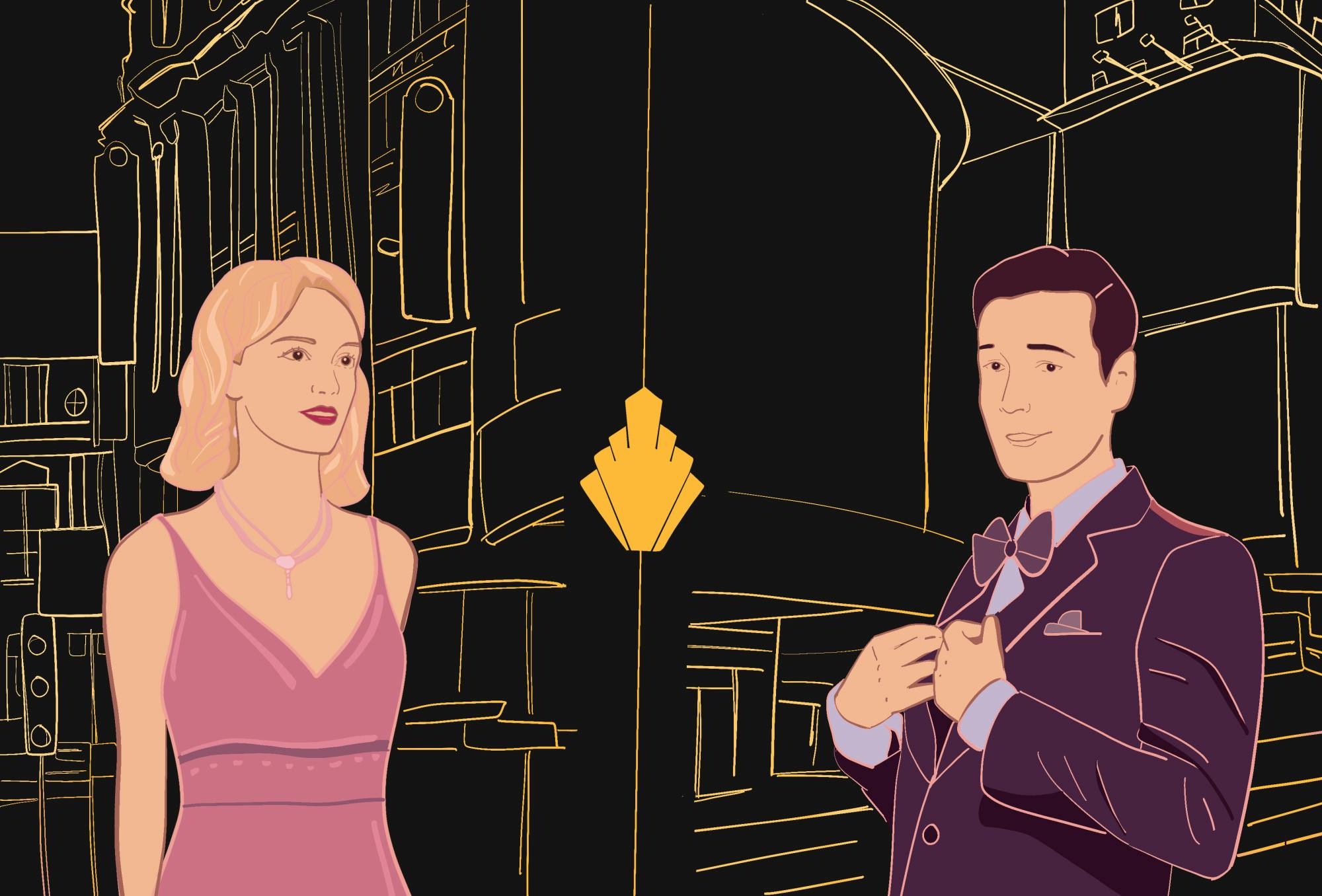New York City and London are two cities renowned for their world class theater. Broadway and the West End hold the crowns for commercial success, but there are countless off-Broadway and additional, professional London theaters that add to their status as theater hubs. I attended the theater FSP in London in the summer of 2022 and lived in New York City in the summer of 2023. Having lived in these two cities, the differences in theater culture could not be more apparent.
While in London, I saw “The Great Gatsby: The Immersive Show,” which became one of my favorite shows. The immersive show was an experience where the audience could dress up and be involved in the classic Gatsby story. Everyone had a different experience as actors divided the audience into small groups where the viewers either watched a moment between characters or made light conversation with the actors in character. Then, another actor entered and redirected the audience to another vignette, progressing the story.
What started as a fun night out with friends, turned into an incredible theatrical experience as the actors brought the audience through the inner thoughts of certain characters. In my experience, I was pulled into Daisy Buchanan’s room as she debated whether or not she was staying with Tom. I left with a whole new experience of “The Great Gatsby” story. I loved it so much that when I was in New York City with friends, I insisted we must go. Seeing the same show in both cities became fascinating. I didn’t want to compare them initially, but standing in the New York audience, I couldn’t help it.
Overall, from the moment I walked in the door, London’s theater atmosphere appeared far more serious, while New York felt more like surface-level entertainment. In London, the door was nondescript, the man checking tickets was an actor in full costume, and it felt as though I was entering a secret prohibition-era party. The actor was speaking with a perfected New York accent, and I was seamlessly guided into “Gatsby’s party.” The entire atmosphere was elegant and cohesive.
In New York, there was a sign outside advertising for the show and I stood in line, much like other commercial Broadway shows. A stand with merchandise was right next to the door. The introduction to the experience made the show feel like a typical money-making Broadway performance, and it felt less authentic. The woman checking tickets was dressed in all black with a headset — clearly a theater employee. I was still guided into “Gatsby’s party,” and someone gave a similar welcome speech in the entry room. However, the interactions were almost comedic as the actor engaged with patrons. The set-up of the party was more relaxed, acknowledging that it was a show, so it did not feel as seamlessly immersive.
Once inside, the sets were relatively similar. Both shows had a bar that served themed drinks, and it was open before and after the show as well as during intermission. There was limited seating in both theaters, but with the purpose of moving around and being immersed, it was not an issue. While I waited for the show to begin, the actors mingled with patrons.
Once the show started, the differences became glaringly clear. New York guided the audience, metaphorically holding their hand the entire show. For example, when patrons were talking during the show, the New York cast had to find ways to ask the audience to pay attention while maintaining character. While in London, there was more trust in the audience, and actors were able to focus more on the stories they were telling rather than struggling with the logistical factors of an immersive show.
In London, I left the theater speechless due to the incredible portrayals of such complex characters. The show left me with a whole new understanding of the story. Having been pulled into Daisy’s rooms for most of the show, I saw Daisy work through the reasoning of why she stays with Tom. London audiences have a different standard for theater than those in New York — they seem to appreciate stories that force reflection long after the show ends. In this case, everything about this performance stuck with me.
The London show was extremely tight, with everything moving seamlessly. The immersive show experience involved the audience being separated into different rooms, following certain characters in the story. The movements were gracious and never broke the fourth wall. In New York City, however, the transitions were clunky and almost comedic. The actors in New York coddled the audience throughout the entire show, while the actors in London moved fluidly around and with the audience.
Now, this was largely the fault of the two audiences and not reflective of actor talent. London’s audience was silent and extremely respectful the entire performance. New York’s audience was loud and impatient, and actors frequently struggled to remain in character while asking the audience to be quiet, as if they were kindergarten teachers.
Surprisingly, the scripts also varied quite a bit between the two shows. In London, the plot of the story is emphasized, whereas in New York, the audience is entertained with silly games. In the New York show, Myrtle and Tom invite audience members to play a game of “never have I ever.” Instead of learning anything about Myrtle or Tom as characters, the audience plays a haphazard game. Additionally, New York added several characters that London did not include. While the larger cast is not necessarily worse, the plot was harder to follow, and the characters had less depth. The cast size in London felt perfect. The differences in the scripts led to London’s show being more introspective while New York’s was frivolous entertainment.
Overall, New York felt like a show that I would go to for fun. London, on the other hand, was an incredible experience that heightened my understanding of “The Great Gatsby” and continues to inspire me. Both New York and London have theatrical identities, but London has more of a seriousness surrounding theater. With Renaissance theater, Shakespeare and The Globe being tied to England’s history, London audiences have grown up with theater and seem to have more respect for it. In New York, commercial Broadway has hindered honest storytelling as audiences are willing to pay for thrills. Big Broadway shows have large budgets for technical flair, such as “Back to the Future” having a flying car and “The Great Gatsby: The Immersive Show” having a character who tap dances. Broadway has resorted to this flashy, money-making theater that does not provoke much thought. The entertaining flair tends to overshadow the actors, distracting from the character work that is oftentimes the most valuable part of a show.
Of course, there is incredible theater in both cities and surface level entertainment-style theater in both cities. However, New York City theater and American theater as a whole could learn a lesson from this comparison. The flying cars and flashing lights can only keep a show open temporarily. “The Great Gatsby: The Immersive Show” ran for seven years in London, becoming the longest running immersive production to play in London. However, in New York City, it ran for just over two months. It might seem that flashy shows sell, and make money, but theater with complex stories and characters will pay off. It is time for theater to be valued for its stories and characters.

Elle Muller is a ’24 from Tucson, Arizona. She is double majoring in English and creative writing & theatre. At The Dartmouth, she served as the news executive editor for the 180th Directorate. Before that, she wrote and edited for Arts. In addition to writing, Elle is involved with dance and theatre at Dartmouth.




